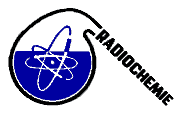Speaker
Dr
Ashraf Khater
(King Saud University)
Description
Phosphate rock beneficiation processes (crushing, screening, washing, magnetic separation and wet screening) aims to increase the phosphorus content of the run-of-mine (ROM) ore. It starts with the ROM ore and ends with the wet rock, and different rejects (by-products). These by-products have potential environmental hazards due to their content of Naturally Occurring Radioactive Materials – NORM especially uranium-238 series. They have also potential industrial and agricultural useful applications due to their physicochemical properties such as their relative high content of phosphorus, clay and iron. Representative samples of ROM ore, wet rock, and beneficiation processes by-products (wet screening, magnetic separation, slim, and clay and dolomite rocks) were collected. Natural radionuclides (238U, 235U, 232Th, 40K, 210Pb, 210Po) were measured using γ-ray spectrometer, α particle spectrometer and ICP-MS analytical techniques. Radiologically, internal hazards index, external hazard index, representative level index, γ absorbed dose rate and occupational dose equivalent due to inhalation were calculated. Potential hazards due to beneficiation processes and their by-products were discussed. Some of the by-products could have potential useful applications such as clay rock and slim for agricultural soil reclamation. The aspects of these useful applications were discussed.
Primary author
Dr
Ashraf Khater
(King Saud University)

